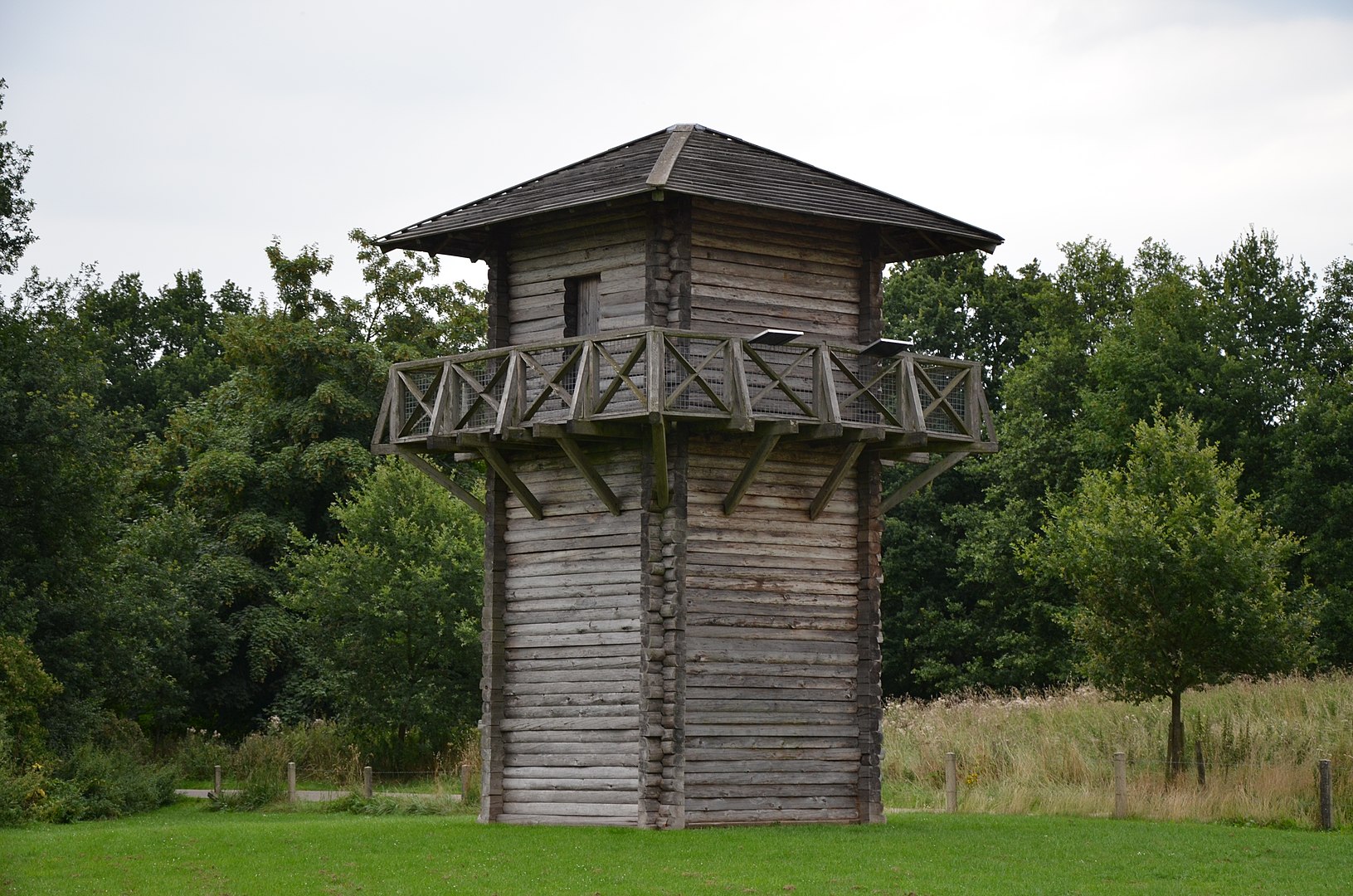The campaigns of Julius Agricola in Britain, recorded for posterity by his son-in-law Cornelius Tacitus (De Vita Iulii Agricolae), were to conclude with the building of a new fortress of the Twentieth Legion at Inchtuthil on Tayside. At the same time a number of forts were also constructed at the mouth of each glen leading into the Caledonian highlands; to the south-east of the Inchtuthil fortress at Barochan on the Clyde, Drumquhassle at the south-east corner of Loch Lomond, Menteith, Bochastle near Callander, Dalginross near Comrie and Fendoch at the mouth of the Sma’ Glen, also to the north-east of the fortress at Cardean, Inverquharity and Stracathro. A secondary line of defence was also established in southern Tayside to the rear of these forts, between the forts at Ardoch, Strageath and Bertha.
The Agricolan Glen Blocking Forts Listed from South-West to North-East
| Barochan | (Paisley, Strathclyde) 3¼ acres (c.1.3 ha) |
| Drumquhassle | (Drymen, Central) 3½ acres (c.1.4 ha) |
| Menteith | (Malling, Central) 6¾ acres (2.7 ha) |
| Bochastle | (Callander, Central) 4¾ acres (1.9 ha) |
| Dalginross | (Comrie, Tayside) 3 acres (c.1.2 ha) & 6 acres (c.2.4 ha) |
| Fendoch | (Sma’ Glen, Tayside) 5 acres (c.2.03 ha) |
| Cardean | (Angus/Tayside) 8 acres (3.2 ha) |
| Inverquharity | (Tayside) 1 acre (c.0.45 ha) |
| Stracathro | (Tayside) 6½ acres (2.64 ha) |
It is almost certain, given the strength of their garrisons, that these so-called ‘glen blocking forts’ were intended to act as springboard for an offensive into the Caledonian highlands along the lines of the Glens. Any plans which may have been initiated to this effect were halted and the legionary base abandoned uncompleted, perhaps in the winter of 85/86, certainly by the summer of 86 when the removal from Britain of the Second Legion Adiutrix forced the Twentieth to be withdrawn from Scotland in order to maintain the garrison at Chester, recently vacated by the Second. (q.v. Hobley)
The Gask Ridge Watch-Towers in Tayside Listed from West to East
| Strageath | Auxiliary Fort – 4½ acres (1.8 ha) |
| Parkneuk | Watch-Tower S of road |
| Raith | Watch-Tower S of road |
| Ardunie | Watch-Tower S of road |
| Roundlaw | Watch-Tower N of road |
| Kirkhill | Watch-Tower S of road |
| Muir o’Fauld | Watch-Tower S of road |
| Gask House | Watch-Tower S of road |
| Witch Knowe | Watch-Tower N of road |
| Moss Side | Watch-Tower N of road |
| Thorny Hill | Fortlet & Watch-Tower N of road |
| Westmuir | Watch-Tower N of road |
| Bertha | Large Auxiliary Fort – 9 acres (3.6 ha) |
Following the reorganisation of the British legions the Glen Blocking Forts were abandoned one by one and military activity was concentrated along a secondary line of defence in southern Tayside. The Agricolan forts at Ardoch and Strageath both underwent a period of secondary (or perhaps tertiary) occupation at this time and a new fortlet was built between the two at Kaims Castle. The fortlet was augmented with two small watch-towers to either side of the military road to the south at Shielhill and another sited just east of the military road leading north at Westerton. The military road leading eastwards across the Gask Ridge between Strageath and Bertha was furnished with a number of watch-towers spaced between 760 m to 1,520 m apart. (Breeze, chap.3)
Flavian Campaigns on the Continent
The reason for the withdrawal of the Second Adiutrix from Britain was in order to participate in the retaliatory campaigns of emperor Domitian against Decebalus in Dacia, for which he had to cut short his propaganda-driven Chattan campaigns in Germany, both of which were to drain more of Britain’s military resources. The premature conclusion of the Chattan War was to see the division of Germania into two provinces, Superior and Inferior, along with a marked change of Roman military policy when a series of timber-built watch-towers were erected, spaced between 500-600 m apart and fronted by a continuous timber palisade which stretched across the 120 miles (200km) of forested land between the natural barriers of the Rhine and the Danube. These works predate the fortifications along the Gask Ridge by about five years. They both show that the concept began to emerge in the Roman imperial mindset that the empire actually possessed limits (Williams, chap.3).
Significantly, it is during this period that the word limes was first used in Latin literature to denote the frontier of the empire, appearing in Tacitus’ Agricola (XLI.i), also in his Germania (XXIX.iv).
